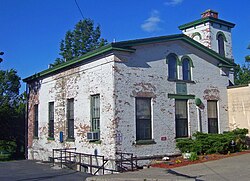Map Illustrating the General Geological Features of the Country West of the Mississippi River...
Autor/Urheber:
Shortlink:
Quelle:
Größe:
1424 x 1251 Pixel (933142 Bytes)
Beschreibung:
Drawn by Thomas Jekyll. Lithographed by Sarony, Major, & Knapp.
Lizenz:
Public domain
Relevante Bilder
Relevante Artikel
James Hall (Paläontologe)James Hall war ein US-amerikanischer Paläontologe und Geologe. .. weiterlesen


